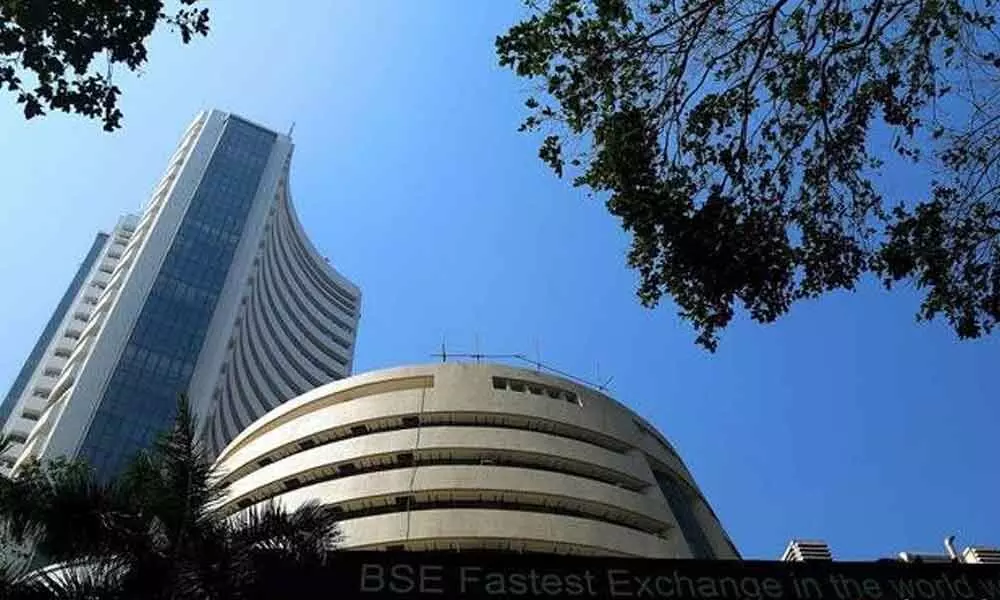Value investing is coming back

Spurs bull run on bourses
Buoyed by renewed buying from FIIs, fall in international crude oil prices, status quo and no negative news on Ukraine-Russia front and expectations over good Q4 results; the domestic markets registered more than three percent gains during the week ended.
Buoyed by renewed buying from FIIs, fall in international crude oil prices, status quo and no negative news on Ukraine-Russia front and expectations over good Q4 results; the domestic markets registered more than three percent gains during the week ended. BSE Sensex climbed 1,914 points to 59,277, and NSE Nifty jumped 517 points to 17,670, while the Nifty Midcap and Smallcap indices also traded in line with benchmarks, rising three percent each. FIIs have bought Rs5,590 crore worth of shares on the weekly basis after several weeks of selling. The renewed buying interest from FIIs after a relentless selling since October 2021 brought a sigh of relief for the market. It will be important to see how FIIs will behave in FY23. In the week ahead, market will be closely eyeing RBI's monetary policy review outcome scheduled on April 8. Analysts are expecting status quo.
However, the central bank's commentary on inflation and growth would be critical amid global tightening. Rising inflation is creating pressure on the committee to tighten money supply, but that may stop the recovery of the economy. Goods and Services Tax (GST) collections touched an all-time high of over ₹1.42 lakh crore in March, boosted by improved economic activity as the Omicron wave waned as well as anti-evasion measures and rate rationalisation. With this, the Centre's GST revenue for FY22 amounted to Rs6.19 lakh crore, exceeding the revised budget target of Rs5.70 lakh crore. The record GST collections have also been aided by the strong sales activity of corporates in March, as they race to close the fiscal with high top line growth.
Near term direction of the markets will be dictated by the RBI policy meeting outcome, macroeconomic data, Q4 results season, international crude oil prices, developments on Russia-Ukraine front and other global cues. Value investing is coming back. Simply put, one that has a low price-to-book ratio (P/B)—a measure of market cap relative to tangible assets. The lower the price-to-book ratio, the deeper the value. Value strategies often overlap with dividend-focused income strategies—because many value stocks are more established companies in traditional dividend-paying sectors such as financial services, consumer companies and healthcare.
Listening Post: Stock Market rebound sits on a shaky foundation. Comparing last month's rebound to history should make investors doubt its lasting power. Extreme selloffs beget extreme rallies, and exactly that has happened in stocks in the past two weeks. The big question for Dalal
Street: Did March mark the start of a durable rally, or is this merely a dead-cat bounce of the type that often occurs in bear markets? A comparison with the past three big bear-market lows provides some parallels, but also some important differences. First up is that the biggest losers turned into the biggest winners. In 2002, 2009 and 2020, the sectors that were the best performers became the worst or among the worst in the early stages of the rebound, and vice versa. Second is that the low was driven by sentiment, not only fundamentals. Sure, fundamentals mattered hugely: Russia's invasion of Ukraine led to much higher oil prices, helping energy stocks. The US Fed's hawkish turn led to one of the biggest-ever selloffs in Treasury's, pushing up bond yields and so hurting stocks whose profits lie far in the future. But the investor mood had soured horribly, which typically happens at lows. Third, the reversal just seems too perfect across all stocks. If things had switched over in real life, or even in bond yields, such a swing would be explicable. They haven't, which makes me suspicious. The mood shifted two weeks ago and began to improve, which naturally contributes to a recovery even as the fundamentals remain threatening. Every major low has been marked by grim sentiment and the view that stocks are just too risky. There are important differences though, which make me doubt the durability of this bounce. First is that usually at lows, fundamentals appear to be moving in the right direction too, not only sentiment. This time fundamentals continue to move in the wrong direction.
Oil prices were up since stocks hit their March low. Second is that the type of rebound is weird, because the selloff itself was unusual. Usually when the market reaches its low it is cheap value stocks that are hit hardest, both because they are most vulnerable in an economic downturn, and because they are the ones investors have the least desire to own. This time it is growth stocks that fell the hardest, and had the biggest rebound. On a fundamental level, it made sense that growth stocks suffered this year because they are the ones most exposed to higher bond yields. It also
made sense that value did much better, since it includes lots of banks that should benefit from higher interest rates and energy companies that benefited from the oil price. But the fundamentals for growth actually worsened as stocks recovered, so the case for the tech and growth rebound being sustainable has to be that they sold off even more than the fundamentals justified. It is true that valuations are down a lot, but growth and tech are hardly the sort of bargain that would justify carving out a market bottom. Cheaper, but not cheap: That only took the valuation back to where it stood just before the pandemic, while bond yields are now significantly higher than they were then.
If you're a millionaire by the time you're 30, but blow it all by age 40, you've gained nothing. Grow and protect your investment portfolio by carefully diversifying it, and you may find yourself funding many generations to come.
F&O/ sector watch
Settlement week witnessed good rollovers in the derivatives segment. Rollovers in Nifty futures stood at 82 per cent (last month 77%), above 3-month average of 77 per cent. Nifty started off the April series on a strong note after a quiet monthly settlement for the March series. Overall market wide rollovers stood at 91 per cent compared to last month's 92 per cent. But in value terms it was Rs185938 crore, which is higher than last month Rs171949 cr, (price effect was positive as avg. price movement in stocks was 9%) leading to improve overall position Rs2,33,054 cr Vs Rs1,98,574 cr. Maximum Call Open Interest (OI) was seen at 18,000 strike followed by 17,600 and 17,500 strike, with Call writing at 18,000 strike then 17,600 & 17,800 strikes. Maximum Put OI was seen at 17,500 strike followed by 17,400 strike and 17,600 strike, with Put writing at 17,400 strike then 17,300 & 17,500 strikes.
Put writers are more aggressive then the Call writers; hence the undertone is bullish. Implied Volatility (IV) of Calls closed at 19.50 per cent, while that for Put options, it closed at 21.08 per cent. The Nifty VIX for the week closed at 20.56 per cent and is expected to cool off in the upcoming week. PCR of OI for the week closed at 1.34. As per the option data, the Nifty is likely to trade in the range of 17,500-18,000 levels on an immediate basis, while the broad trading range would be 17,300-18,000. Clearly 17,500 level is proving to be the inflexion point. As Index futures positions have increased; ahead of the results season adopt stock specific approach say savvy market players. Sectors that can outperform Index in the April series are Banking, Financials, Capital Goods, Infrastructure, Chemicals and Realty. Almost all the sectors are contributing to the rebound now, however the contribution of the banking pack is critical for Nifty to test the 17,800-18,100 zone ahead. Ahead of Stock futures looking good are Adani Ports, Asian Paints, Canara Bank, ITC, Jubilant Food, M&M Finance and SBI. Stock futures looking weak are Alkem, Hero Motocorp, Intellect Design, ONGC, Metropolis, STAR and Torrent Pharma.
(The author is a stock market expert. He is former vice chairman of AP Planning Board)














